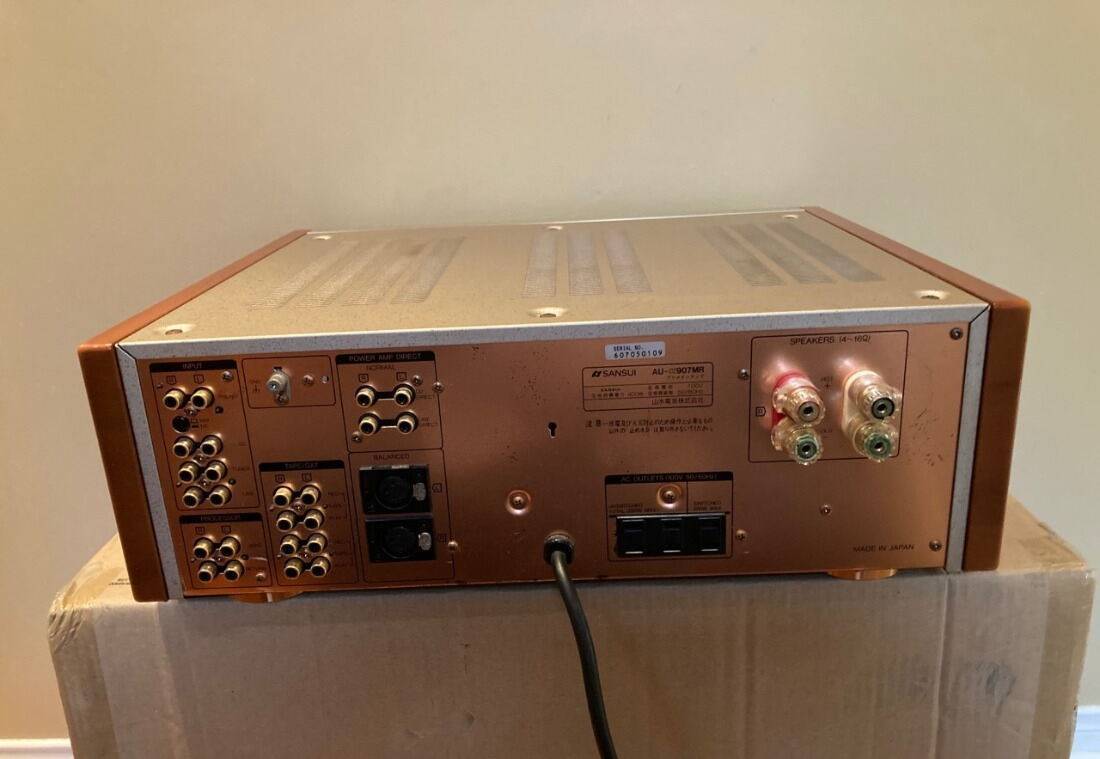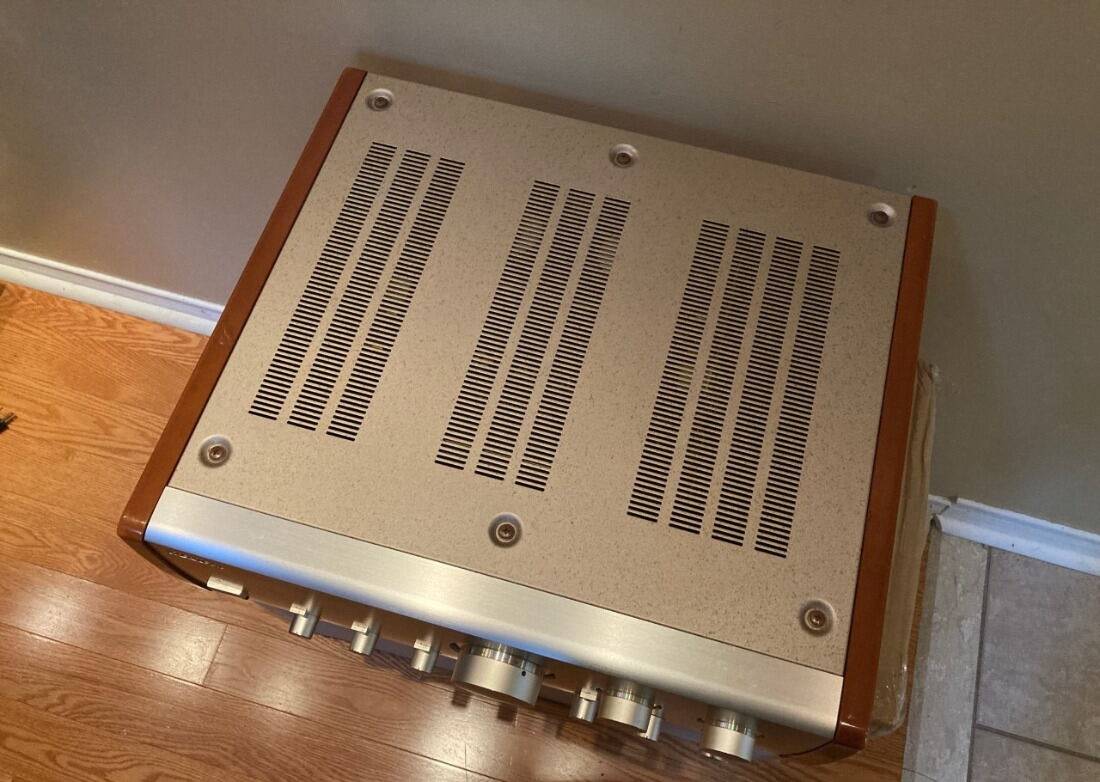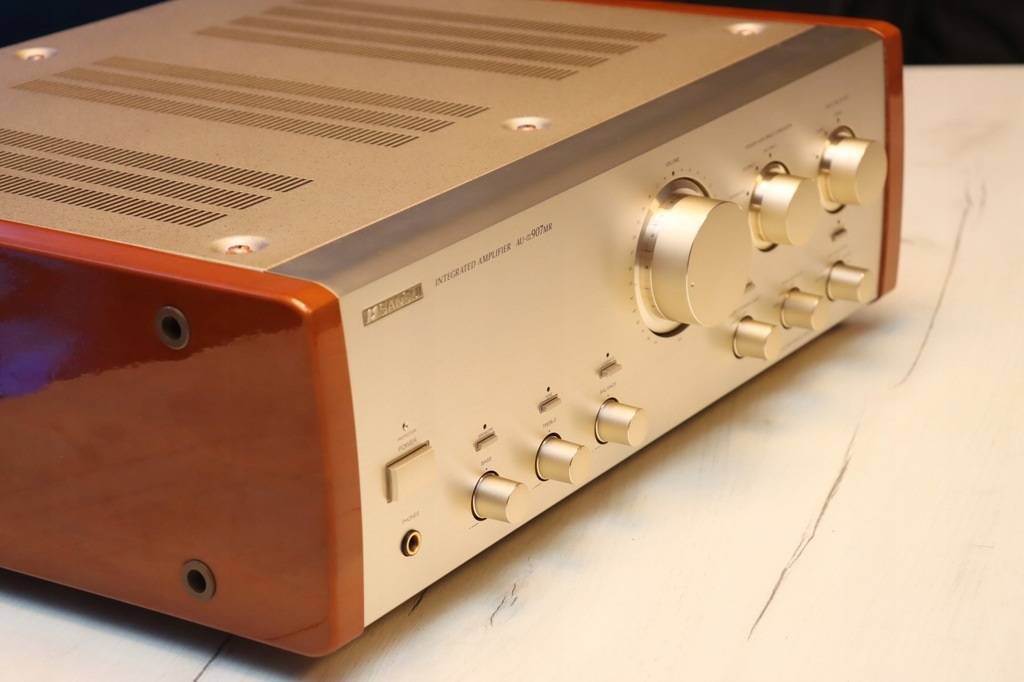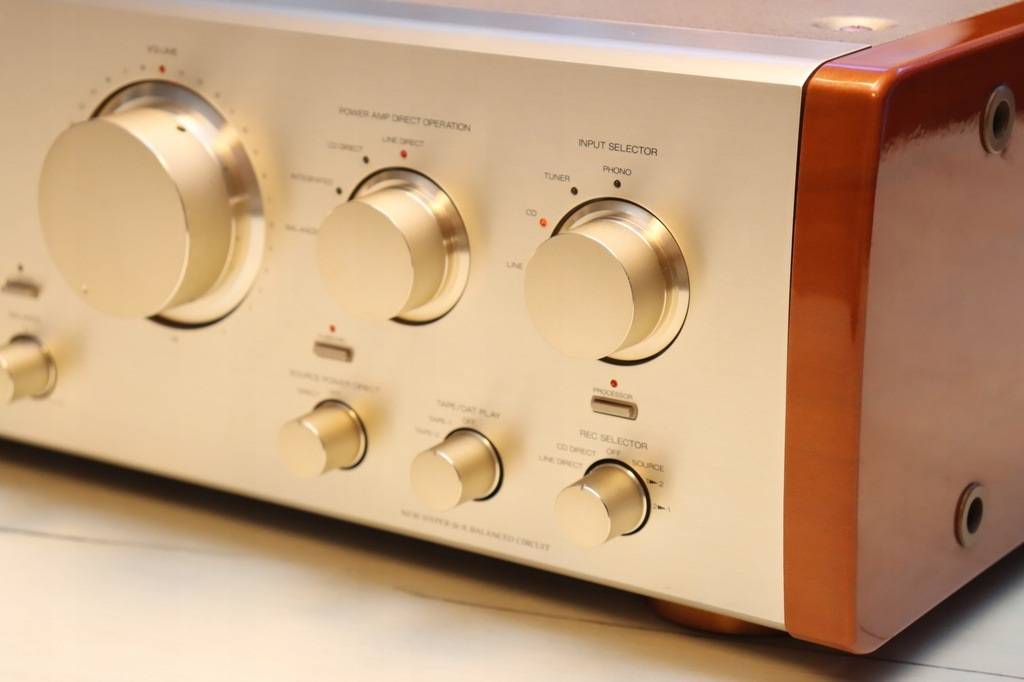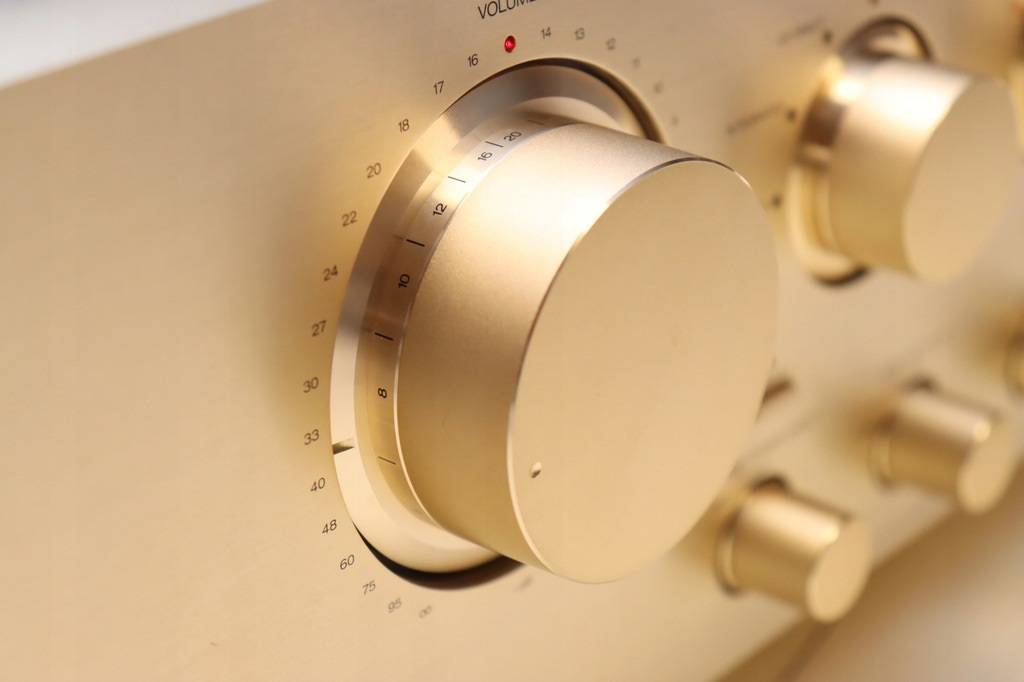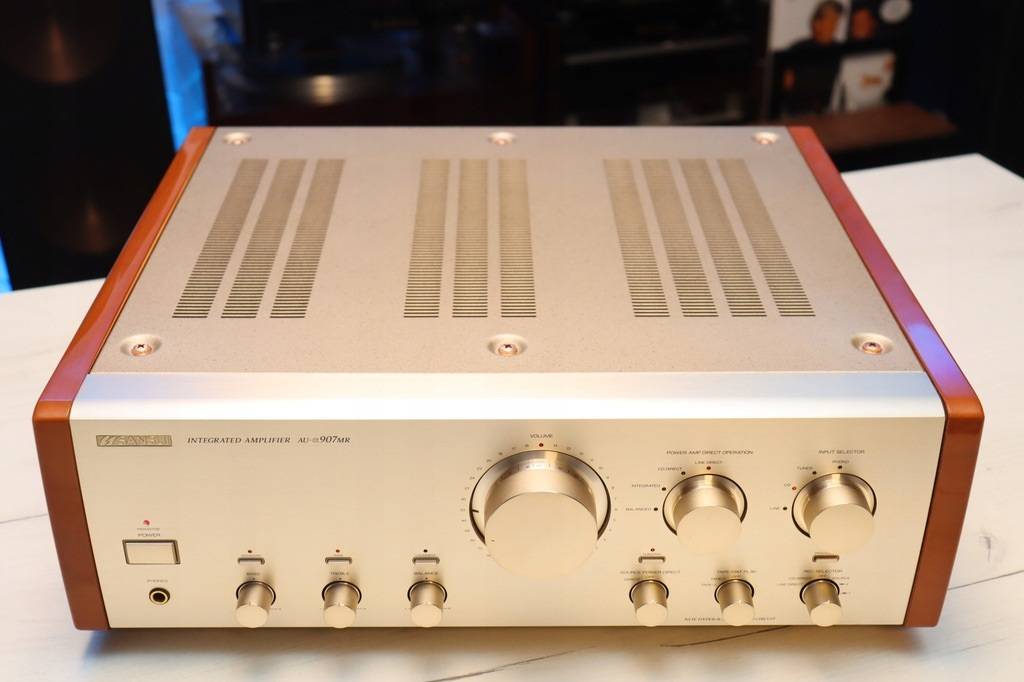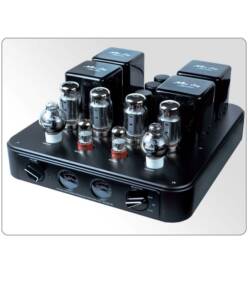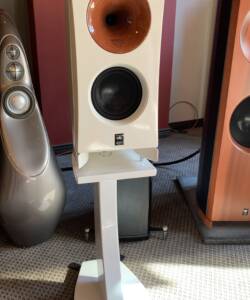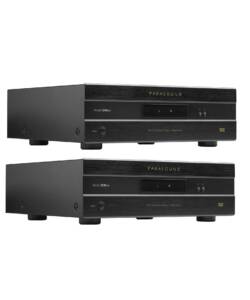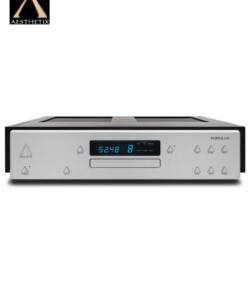Sansui AU-α907MR Integrated Amplifier (Super scarce)
Original price was: R90,000.00.R49,000.00Current price is: R49,000.00.
This is probably the ONLY one in South Africa. Its sounds amazing and considered to be with the AU111 from 1969 the BEST amplifiers Sansui has ever made!
| Type | Integrated amplifier |
| Power Amplifier Unit | |
| Effective output (10 Hz to 20 kHz Simultaneous operation of both channels) |
190W + 190W (6 Ω) 160W + 160W (8 Ω) |
| Total harmonic distortion factor (at effective output) | 0.003% or Less (8 Ω) |
| Cross modulation distortion factor | 0.003% or Less (8 Ω) |
| Damping factor | 150 (8 Ω) |
| Frequency Response (1W) | DC ~ 300 khz + 0 -3dB |
| Input Sensitivity / Impedance | 1V/5k Ω (1 kHz) |
| Signal-to-noise ratio (A network) | 120 dB or more |
| Dynamic Power | 580W (2 Ω) 390W (4 Ω) 310W (6 Ω) |
| TIM Sawtooth | Measurement limit value or less |
| Slew rate | 200 V / μ sec |
| Rise time | 0.5 μ sec |
| Preamplifier Section | |
| Input Sensitivity / Impedance (1kHz) |
Phono MM : 2.5mV/47k Ω Phono MC : 300 μ V/100 Ω CD, Tuner, Line, Tape/DAT1, 2 : 150mV/20k Ω |
| Phono maximum allowable input | MM:210mV(THD 0.01%) MC:21mV(THD 0.1%) |
| Frequency Response (1W) | Phono MM : 20 Hz to 20 kHz ± 0.2 dB CD, Tuner, Line, Tape/DAT1, 2 : DC ~ 300 khz + 0 -3dB |
| Signal-to-noise ratio (A network) | Phono MM : 90 dB or more Phono MC : 75 dB or more CD, Tuner, Line, Tape/DAT1, 2 : 110 dB or more |
| Tone control | Maximum variation of Bass : ± 6 dB (50 Hz) Maximum variation of Treble : ± 6 dB (15 kHz) |
| Subsonic filter | 16 Hz (-3dB), 6dB/oct. |
| Loudness | + 4 dB (50 Hz), + 3 dB (10 kHz) |
| <Others> | |
| Rated power consumption | 400W |
| External dimensions | Width 471x Height 163x Depth 452 mm |
| Weight | 33.0kg |
Description
AU-111(1966) v.s. AU-Alpha907MR(1995)
I have recently obtained a very clean AU-111. This unit had all original tubes; however somebody has worked on the power circuit before. I believe this person thought the over-heating tube problem as being caused by power circuit problems. I have replaced all of coupling caps as well as most of caps on pre and power amp sections. After making sure all key voltages, I fired up this vintage amp, and it sounded just incredible.
Besides this thirty seven years old vintage master piece, I purchased AU-Alpha907MR last fall. As you can find elsewhere on this site, AU-Alpha907MR is the second latest mass produced 07 Series integrated amplifier. Of course, after the late 1980’s, no high-end Sansui amplifiers were imported in the U.S. The unit I purchased was the display model on 1995 Consumer Electronics Show. The person whom I bought this unit from was the last Sansui national sales manager in the U.S. He wrote, ” …. This year it won Japan’s most prestigious audio award, the SSS Gold award for audio engineering excellence from Stereo Magazine, Japan’s leading audio authority. …..”
He also stated that this unit was used as display purpose only, even never having been fired up. The sad story is that this unit arrived at my home being badly damaged. I spent all day Sunday on early March, I took this unit parts, and fixed all functional damages (the busted power switch, the broken circuit board, the twisted input selector, and the broken head-phone jack.) The volume control was somehow damaged, too; but it’s still functional. There are some cosmetic damages also, but they could be fixed later on.
I would say I spent about twelve hours for fixing. After I made sure that there was no short circuit, I fired up this magnificent amplifier. The sound I heard was just incredible. Now, I have two of Sansui’s master pieces; both sound extremely good. What I needed then was to compare them …..
Here is my comparison originally addressed to my dear friend, Mr. Sten Angskog, in Sweden on 3/16/2003.
AU-Alpha907MR is one of the last high-end integrated amplifiers Sansui produced (it was introduced in 1995, only AU-Alpha907NRA (1998) is the newer mass-marketed transistor integrated amplifier they produced, — AU-07 Anniversary (1996), AU-Alpha607NRAII (1999), and AU-Alpha 607 MOS Limited (1999) were produced in limited numbers.)
I have compared 907MR to AU-111, and the resemblance is astonishing. 907MR was made in 1995 and AU-111 I have tested was the early version of AU-111 made in 1966 (newer one was in 1968). With almost thirty years, there is very little difference in sound! All caps on AU-111 are new, and I tested with Electro-HarmonixÂ’s (made in Russia) new 6L6-GCÂ’s since they sound more vivid than Toshiba or RCA tubes. AU-111 sounds a little sharper, and realistic, but not much. If I had used Toshiba or RCA tubes, it might have sounded identical! The music sources I have used were; DVD Audio test music collection by Panasonic, Miyuki NakazimaÂ’s (a popular Japanese singer song writer) CD, Mozart Sinfonia Concertante in E-flat Major on SACD, and Mendelssohn: Violin Concerto in E Minor on SACD.
The impression I have is;
AU-111 was the ultimate tube amp Sansui ever produced. This was the Sansui’s technical submit of its root – transformer production. Also, in circuit design, Sansui adopted the latest of many years of tube technology. As the result, sonically, I don’t think there is not much room to improve.
Sansui has been a company that improves its products step by step. The early Sansui transistor amps, such as AU-999, AU-9500, AU-9900, AU-919, and AU-D11 all sounded like trying to be like tube amps, and never got there. Sansui stated to change that from AU-D11II, AU-G99X, and AU-X701(this was AU-Alpha607 in Japan (1988)). The high frequency of AU-X701 is so sensitive that Sansui has succeed to go to the root of tube technology; however, they were definitely weak in low compared with tube amps– this is nothing more than comparison, I still like the sound of AU-G99X and AU-X701 much better compared with today’s expensive transistor amps.
By knowing this Sansui tradition, the astonishing resemblance in sound between 907MR and AU-111 tells me that Sansui might have been designing its amps to reach the ultimate sonic submit they have already reached thirty years ago. Even, they might have been using AU-111 as a reference amp for their goal – I can ask those questions to those Japanese engineers whom Mr. Motoki has introduced to me.
This suspicion also coincides with what Sansui did. As I said, Sansui has been a company that always tried to improve the product by one step at a time. The last high-end integrated amp Sansui ever produced was AU-111G in 2000. This was AU-111 specifically redesigned on the pre-amp section for SACD and DVD Audio use. By considering the Sansui tradition, if AU-111G had not sounded equal or better than AU-Alpha907NRA, they would not have introduced AU-111G. This thought process and the result of my test also tell me that Sansui finally archived its goal before it ceased to exist in high-end audio market; to produce the ultimate transistor amp that is equal to the best tube amp Sansui ever produced.
After I wrote this to Sten, I had communications with one of Sansui’s ex-product managers who essentially had responsibilities to develop all high-end Sansui amplifiers since the mid 1980’s to the very end of Sansui’s business as a high-end audiophile equipment manufacturer. His first project as a product manager was AU-X111, and his last one was AU-111G Vintage. His name is Mr. Ichiro Ohshima, and now he owns his own company that offers maintenance and custom tune up for vintage Sansui and other amplifiers. According to him, he has already developed the prototype of twenty-first century Sansui high-end amplifier; however, it will be introduced only when Sansui says it’s ready to do so …….
I asked him if any, there is a reason why AU-111 and AU-Alpha907MR sound so similar.




